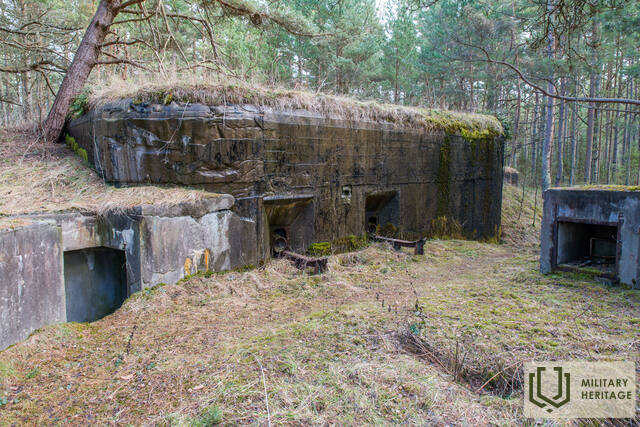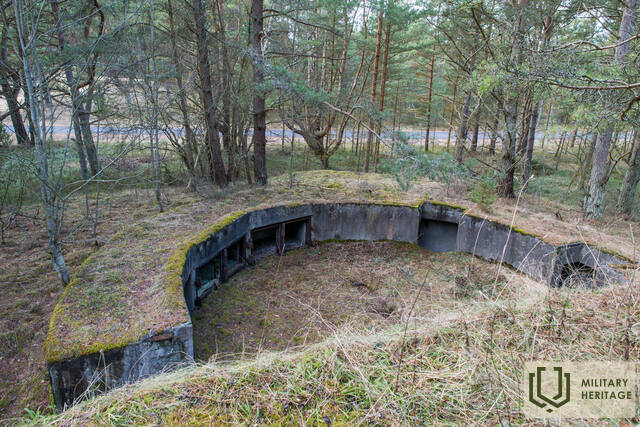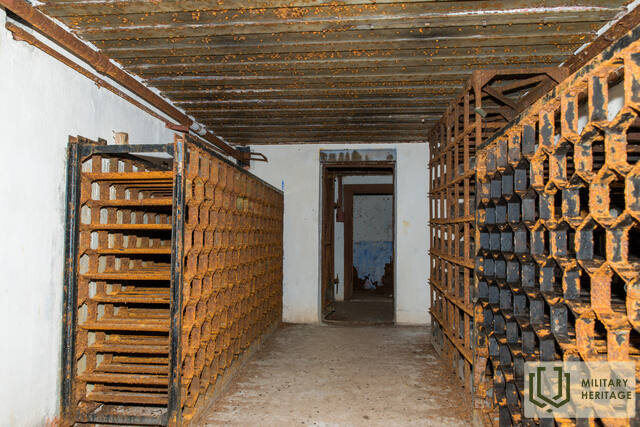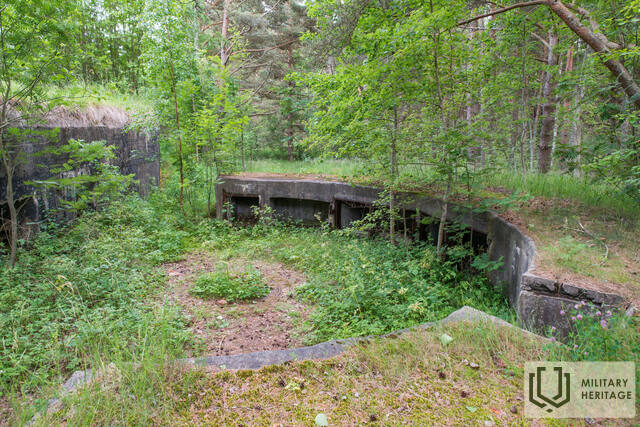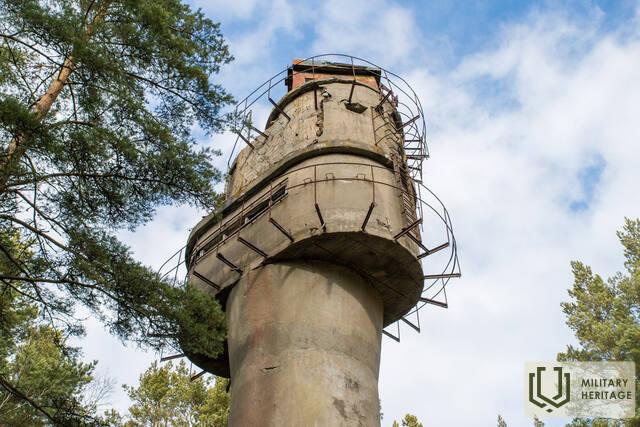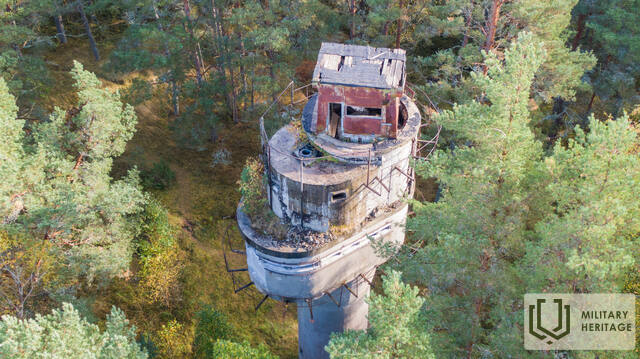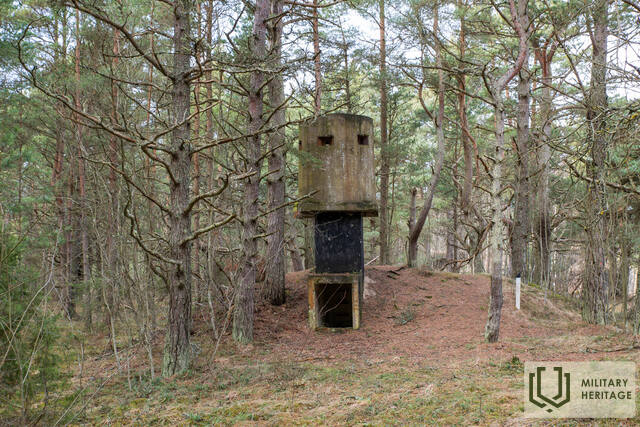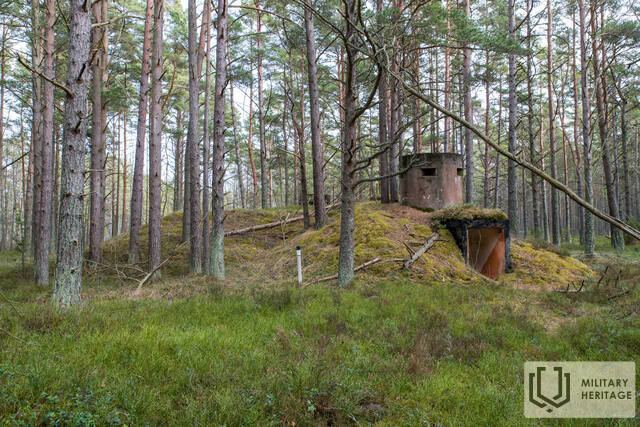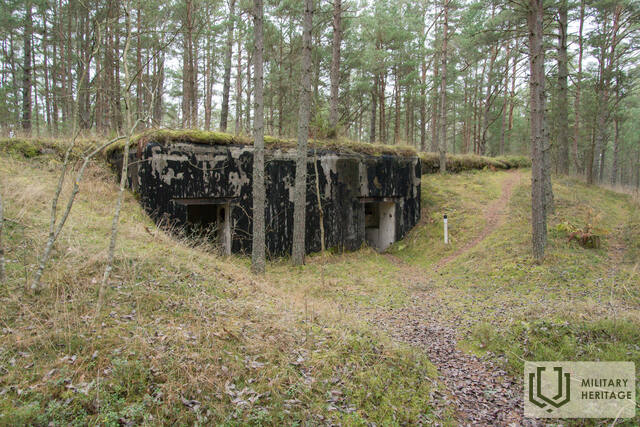The 130-mm Coastal Battery at Tahkuna No 26
Fortification

The 130-mm battery at Tahkuna is architecturally similar to the battery at Tohvri. The ferroconcrete surfaces in the gun emplacements bear the inscripted date 20/IV 1941. In 1941 the battery had four 130-mm B-13 guns (weight of gun including shield 12.8 tons, crew 11, shooting range up to 25 km). The crew included 151 seamen and 9 officers. The guns were installed right before the battles of October 1941.
The ferroconcrete gun blocks remained intact in the war and the crew arrived as early as October 1944. First the battery had three 130-mm B-13 guns. The last shots were fired in Tahkuna in January 1960 when there were 4 guns. When the battery was operating, the last kilometre of the road leading to the lighthouse was closed by a barrier and a gate house and this part of the road is still missing on the military topograhic map published in 1959.
The buildings of Tahkuna battery have survived in a fairly good state. In the ammunition depots next to the gun blocks occasional shell shelves have survived, they can also be found in the ammunition depots in the rear of the emplacements. The shelter-power station (the gas shelter) still has bunk beds. Between the boiler house and the diesel power station there is a particular water line hidden in a high parapet with a concrete reservoir at both ends. A fire control tower was built next to the command post in the 1950s and after the battery was closed down, it was used as an observation post of the naval radio technology unit. As the forest kept growing and the seaview got worse, the tower gained another floor. This new addition demonstrates a notably poorer building quality in comparison with the rest. The added floor includes a stove, whereas originally the tower had central heating. On the whole territory of the battery there are cable ditches that have been dug open – dating from the 1960s when the collective farms were permitted to take electric gear from the abandoned batteries, as well as from the early 1990s when all the cables that had been meanwhile installed and could be spotted, were taken. With the territory being completely neglected and heavily overgrown, finding and studying the objects could be complicated.
On the territory of the battery, next to the parking lot, there is a monument from 1968 in memory of the Baltic Navy soldiers who perished in 1941. The author of the monument is Vitali Navoznyhh, originally from Leningrad. He participated in the battles of 1941 in Hiiumaa and settled on the island after the war, working as a stonecarver. Next to the monument there is a tombstone to two unknown soldiers who were buried there in 1973.




